14 Traditional Knives From Around the World (And Their Stories)
Knives are essential tools, but traditional knives carry much more than just practical value. Each one holds a piece of history, shaped by the culture and people who created it. These knives have served countless purposes, from hunting and protection to rituals and art. With each design, a story is told through the materials, craftsmanship, and usage.
This post may contain affiliate links, which helps keep this content free. Please read our disclosure for more info.
Japanese Katana
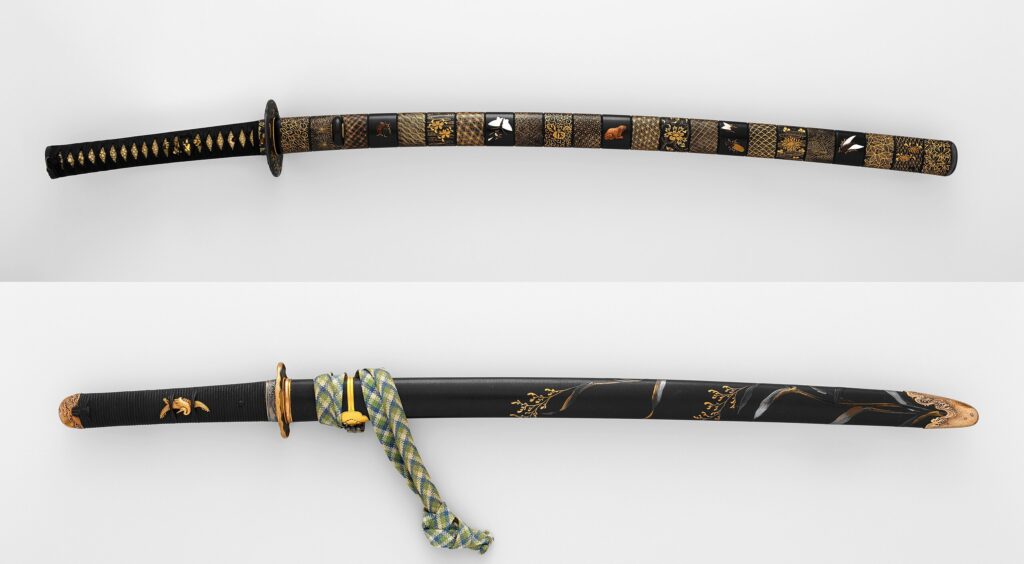
The katana, a traditional Japanese sword, was first developed in the late 12th century. It is known for its curved blade, sharp edge, and long history in Japanese culture, especially among samurai. The katana is made from high-quality steel, typically using a process called folding, which strengthens the blade. It is deeply symbolic, representing the samurai’s honor and skill. The market value of an authentic katana can range from $1,000 to several thousand dollars depending on its age, craftsmanship, and condition.
The katana was not only a weapon but a symbol of the samurai’s way of life. The sword was often passed down through generations and treated with great respect. Its production involves a lengthy and detailed process, making each katana a unique work of art. Many katana have historical significance, with some belonging to famous warriors. These swords continue to be revered, both as functional tools and artistic masterpieces.
Scottish Dirk
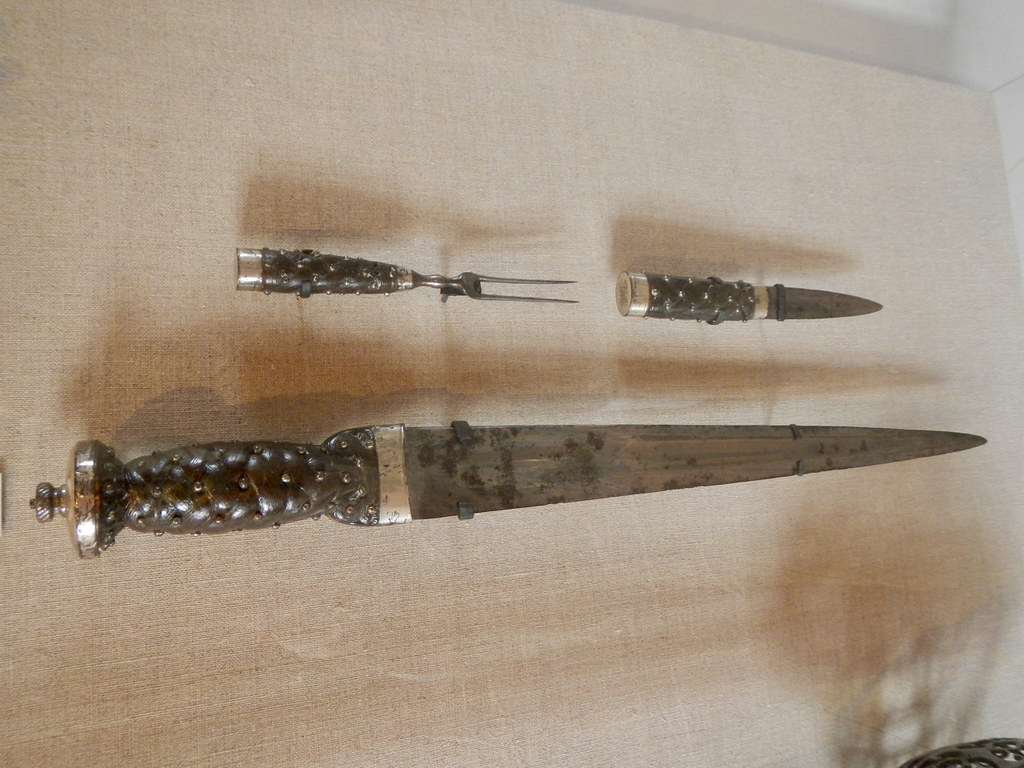
The Scottish dirk has been used for centuries, dating back to the 16th century, as both a utility tool and a weapon. Originating in Scotland, this large knife was traditionally carried by Highland men, often as part of their everyday attire. The dirk has a distinctive long, pointed blade, typically made from steel, and is often decorated with intricate designs. The average market value for a traditional dirk is between $200 and $500, depending on its craftsmanship and age.
Dirks were not just weapons but also symbolic of Scottish culture and pride. They were often worn as part of the Highland dress and used in close combat situations. Over time, the dirk became a symbol of status, with many families passing down intricately designed pieces. The stories behind these knives include their use in various historical battles, often seen as tools of both survival and honor. Today, dirks are often collected for their historical value and craftsmanship.
Finnish Puukko
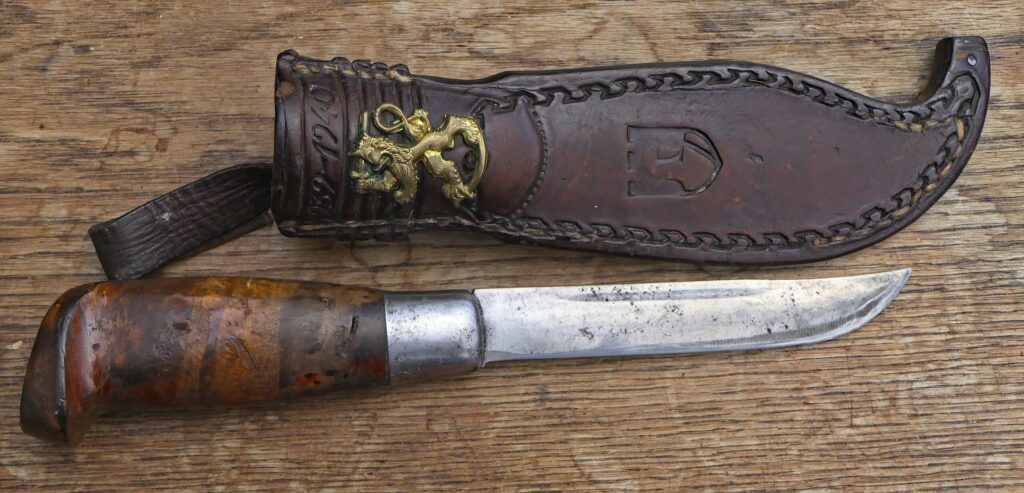
The puukko is a traditional Finnish knife that has been used for centuries by hunters, fishermen, and outdoor enthusiasts. Its simple, functional design features a short, straight blade with a wooden handle. The puukko originated in Finland, and it is known for being crafted from high-quality steel, often paired with a durable birch wood handle. The current market value of a well-crafted puukko ranges from $50 to $150.
Originally, the puukko was designed as a multipurpose tool, used for everything from skinning animals to whittling wood. It has become a symbol of Finnish craftsmanship, representing practicality and simplicity. Many Finnish people still carry a puukko as a part of their daily life, especially in rural areas. The knife’s design has remained largely unchanged for centuries, as it continues to be admired for its functionality. Today, it is considered an essential tool in Finnish culture and is often passed down through generations.
Swiss Army Knife
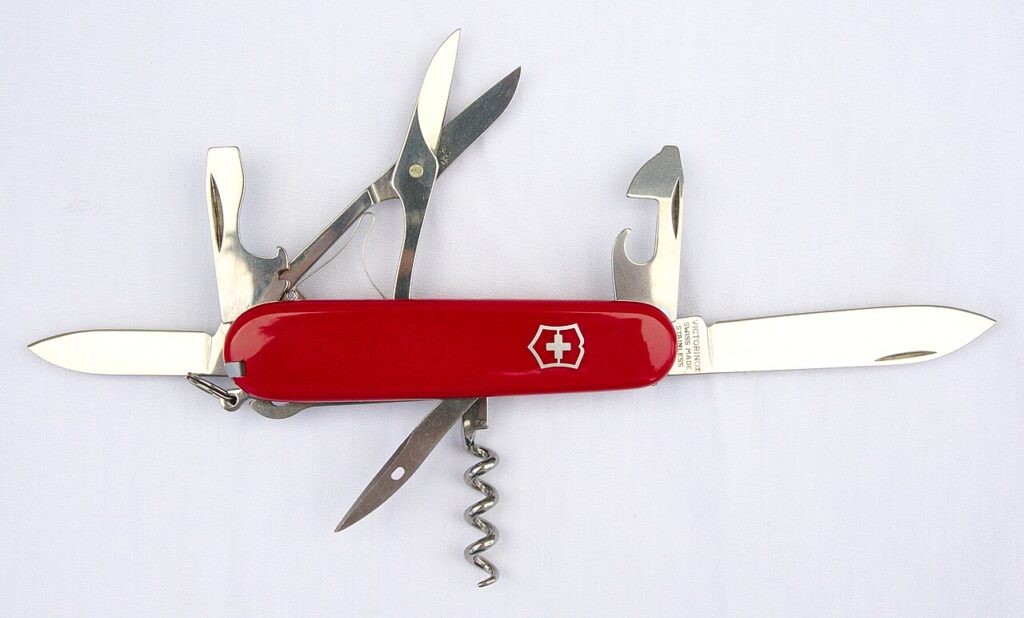
First created in 1884, the Swiss Army knife was originally developed to serve as a tool for Swiss soldiers. Made in Switzerland, the knife is known for its compact design, featuring multiple blades and tools that can be used for various tasks. It is typically made from stainless steel, with a plastic or metal handle. The Swiss Army knife has become a symbol of versatility and reliability, with current market values ranging from $20 to $200.
The knife’s original design included a blade, screwdriver, and can opener, which were essential for soldiers. Over the years, it has evolved into a widely used tool for outdoor enthusiasts, travelers, and everyday users. The Swiss Army knife is often associated with innovation and practicality, as it can be used in countless situations. It is now a popular souvenir, with many people collecting different versions and special editions. Its utility and portability continue to make it a favorite around the world.
Native American Tomahawk
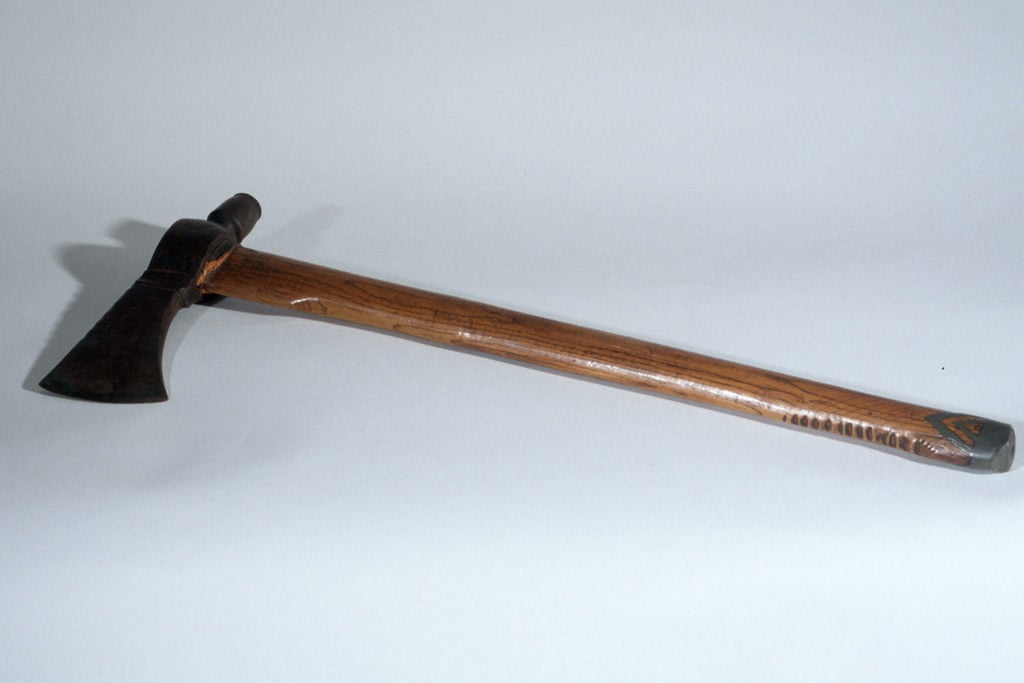
The tomahawk is a traditional Native American weapon that dates back to the early 17th century. Originating in North America, it was initially made with a stone head and a wooden handle, later evolving to include metal blades. The tomahawk was used by various Native American tribes for hunting, warfare, and ceremonial purposes. Today, the average market value of a tomahawk can range from $50 to $300, depending on the craftsmanship and material used.
The tomahawk became an iconic symbol of Native American culture, often used in battle and for hunting. It was valued for its versatility, capable of being used both as a throwing weapon and a tool. The tomahawk’s design has remained largely unchanged, preserving its traditional appeal. Many tomahawks are now collectible items, passed down through generations or made for display. The weapon continues to hold cultural and historical significance in Native American communities.
Spanish Navaja
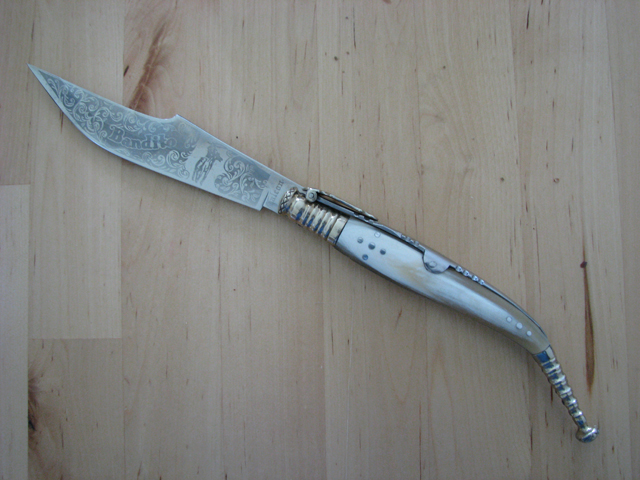
The navaja is a traditional Spanish folding knife that originated in the 16th century. Known for its distinctive locking mechanism, the navaja was initially created for self-defense and daily tasks. Made from steel, with a wooden or horn handle, the navaja’s design allows for a compact, portable knife that could easily be carried in a pocket. The current market value for a navaja typically ranges from $100 to $250, depending on its age and materials.
The navaja became a symbol of Spanish culture, particularly in Andalusia, where it was often carried by men as a personal weapon. The blade’s locking mechanism and folding design made it an effective and discreet tool for self-defense. Over time, the navaja became a part of Spanish folklore, often seen in traditional dances and festivals. Today, it is prized by collectors who appreciate its unique design and cultural history. The navaja continues to be a piece of historical significance in Spanish traditions.
Turkish Yatagan
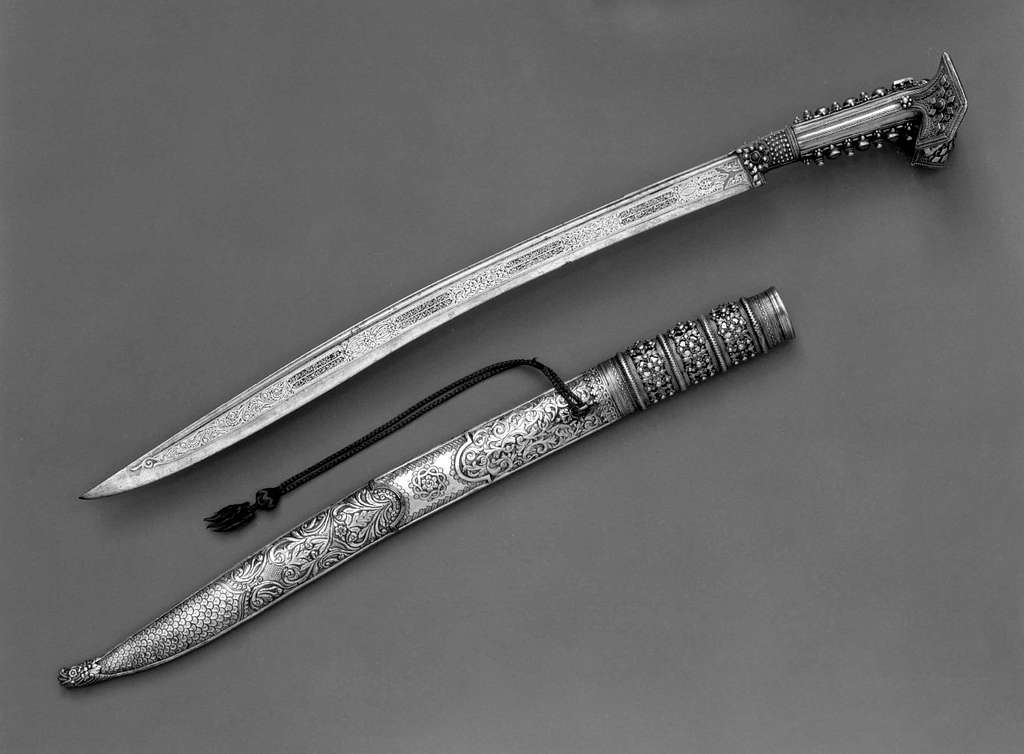
The yatagan is a traditional Turkish sword that dates back to the 16th century. Known for its distinctive curve and wide blade, it was used both as a weapon and a symbol of status. Typically made from steel, the yatagan features an ornate handle and was often carried by Ottoman soldiers. The average price for a traditional yatagan can range from $500 to $2,000, depending on its craftsmanship and historical significance.
The yatagan became widely used during the Ottoman Empire, known for its efficiency in close combat. Its curved blade made it effective for slashing attacks, and the distinctive hilt design allowed for a secure grip. The weapon holds cultural and historical significance, often seen in Ottoman military history. Many yatagans were decorated with intricate designs, signifying the importance of the owner. Today, yatagans are often collected as historical artifacts or displayed as art pieces.
Indian Kirpan
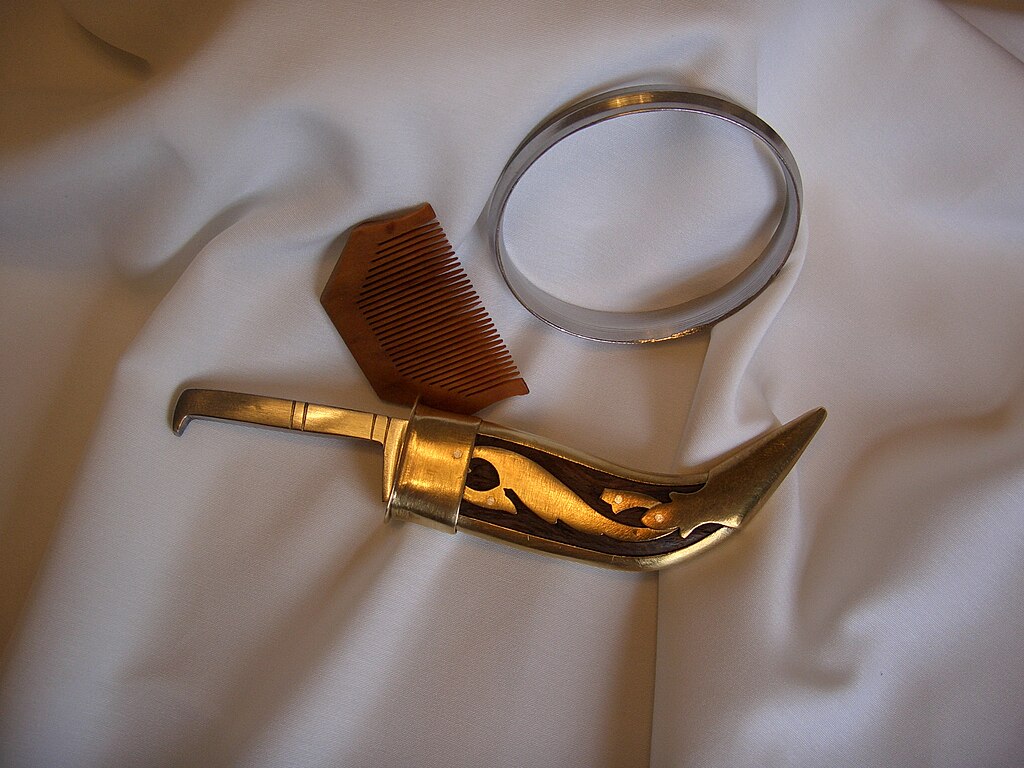
The kirpan is a ceremonial knife or sword that holds deep spiritual and cultural significance in Sikhism. First introduced in the 17th century, the kirpan is one of the five articles of faith worn by practicing Sikhs. Made from steel with a curved blade, it symbolizes the Sikh commitment to justice and protection. The kirpan’s market value typically ranges from $100 to $500, depending on its craftsmanship and materials used.
The kirpan represents the Sikh principle of defending the weak and standing up against injustice. It is worn by Sikhs as a reminder of their religious and ethical duties. The design of the kirpan has remained consistent for centuries, with the blade curved for practicality. Though originally a weapon, the kirpan is now often a symbol of faith and honor. Many Sikhs keep their kirpans as cherished heirlooms or display them as part of their religious practices.
Moroccan Khandjar
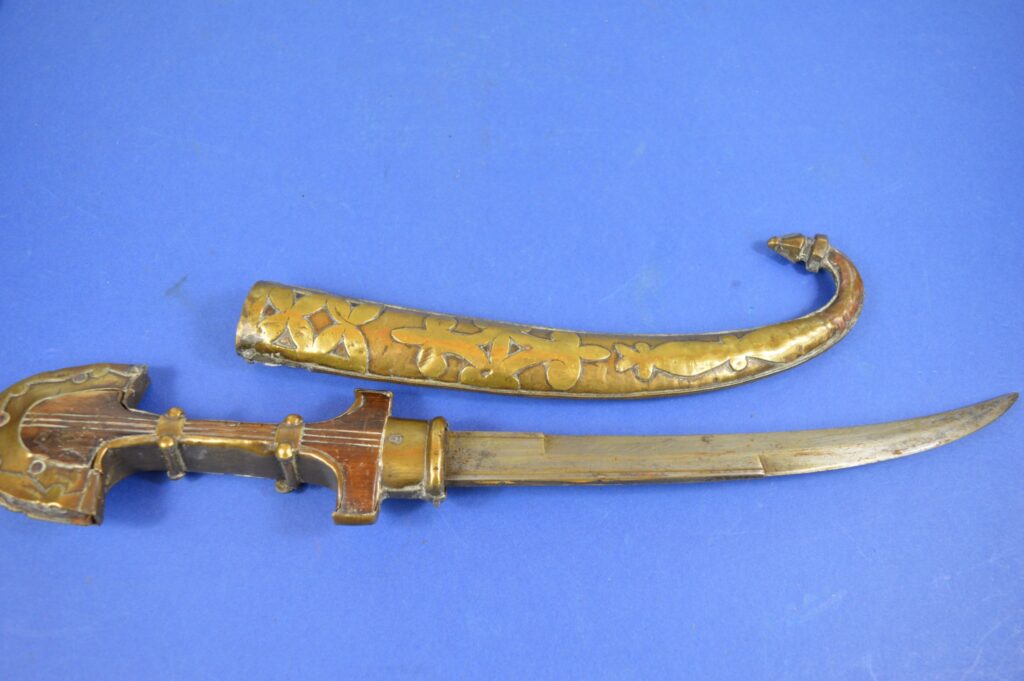
The khandjar is a traditional Moroccan dagger with a curved, double-edged blade. It has been used for centuries as both a weapon and a decorative item. Typically made from steel, the khandjar features a distinctive hilt, often made of wood or bone, with ornate details. The market value of a khandjar ranges from $200 to $500, depending on its age and craftsmanship.
The khandjar has deep ties to Moroccan culture and history, often associated with royalty and warriors. It was used by soldiers and high-ranking officials in ancient times, serving both as a weapon and a symbol of status. The khandjar is also frequently used in ceremonial contexts, with beautifully crafted examples often passed down through generations. Today, these daggers are sought after by collectors for their beauty and cultural importance. Its intricate design and historical background make it a valuable piece of Moroccan heritage.
Persian Khanjar
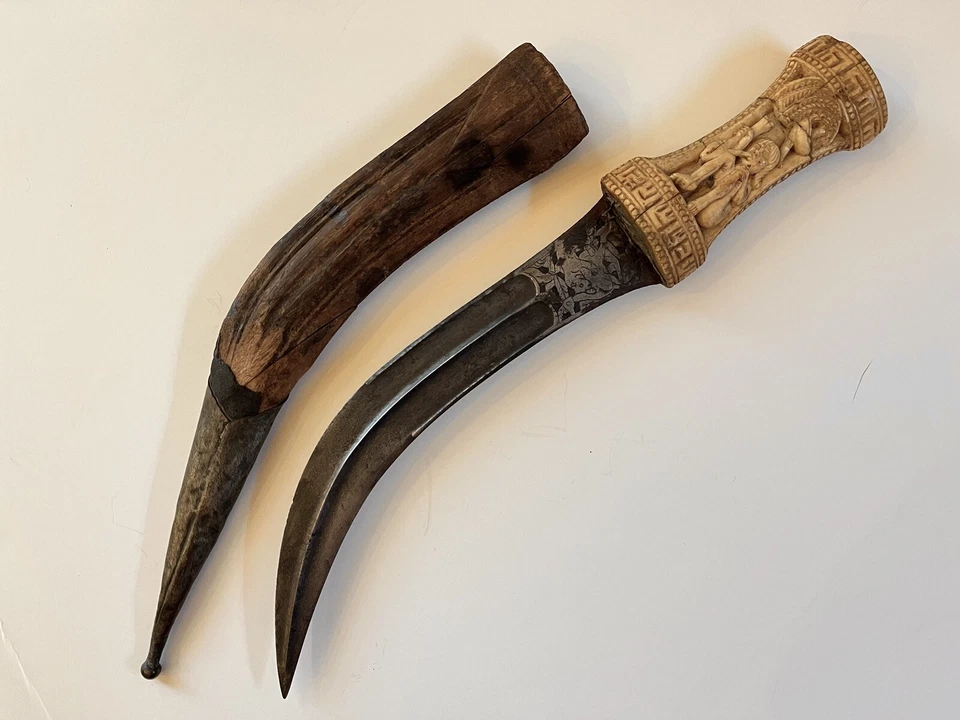
The Persian khanjar is a traditional dagger originating from Persia, dating back to ancient times. Known for its curved blade and distinctive handle, the khanjar was used by Persian soldiers and warriors. The blade is typically made of high-quality steel, while the handle is often adorned with intricate designs made from wood, ivory, or precious metals. The current market value of a Persian khanjar ranges from $300 to $800, depending on its craftsmanship and age.
The khanjar was a close combat weapon and symbol of prestige within Persian society. Its design allowed for swift slashing motions, making it effective in battle. Over the centuries, the khanjar became a symbol of power and strength in Persian culture. The decorative elements of the khanjar often reflect the artistic achievements of the era. Today, the khanjar is highly valued by collectors for both its historical significance and intricate artistry.
Filipino Bolo Knife
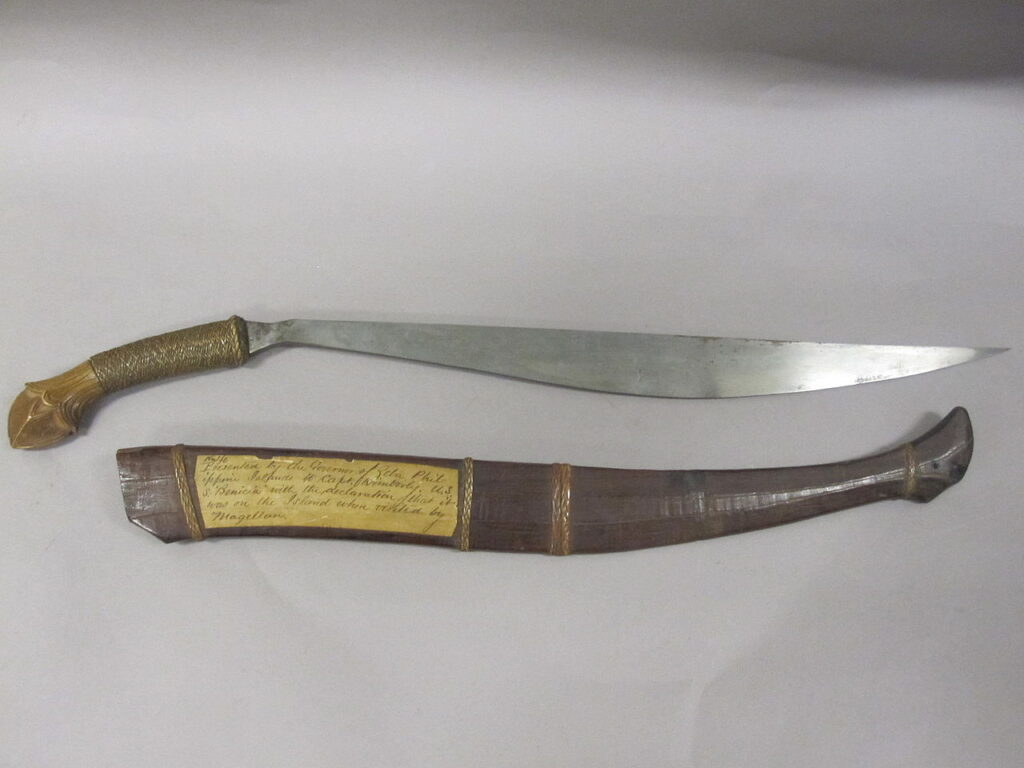
The Filipino bolo knife has a long history dating back to pre-colonial times, and it is used primarily for farming and survival purposes. With its wide, curved blade, the bolo knife is perfect for cutting through dense vegetation. The blade is typically made of steel, while the handle can be crafted from wood or bone. The average market value for a bolo knife is between $30 and $100, depending on its size and materials.
In the Philippines, the bolo knife is an essential tool in rural life, used for a variety of tasks such as farming, hunting, and clearing land. It has also gained a reputation as a weapon, especially during times of conflict. The bolo knife is featured in many traditional Filipino dances, symbolizing strength and resilience. It is widely used by locals and admired by collectors for its practicality and cultural significance. The bolo knife remains a key part of Filipino heritage and craftsmanship.
Chinese Dao Sword
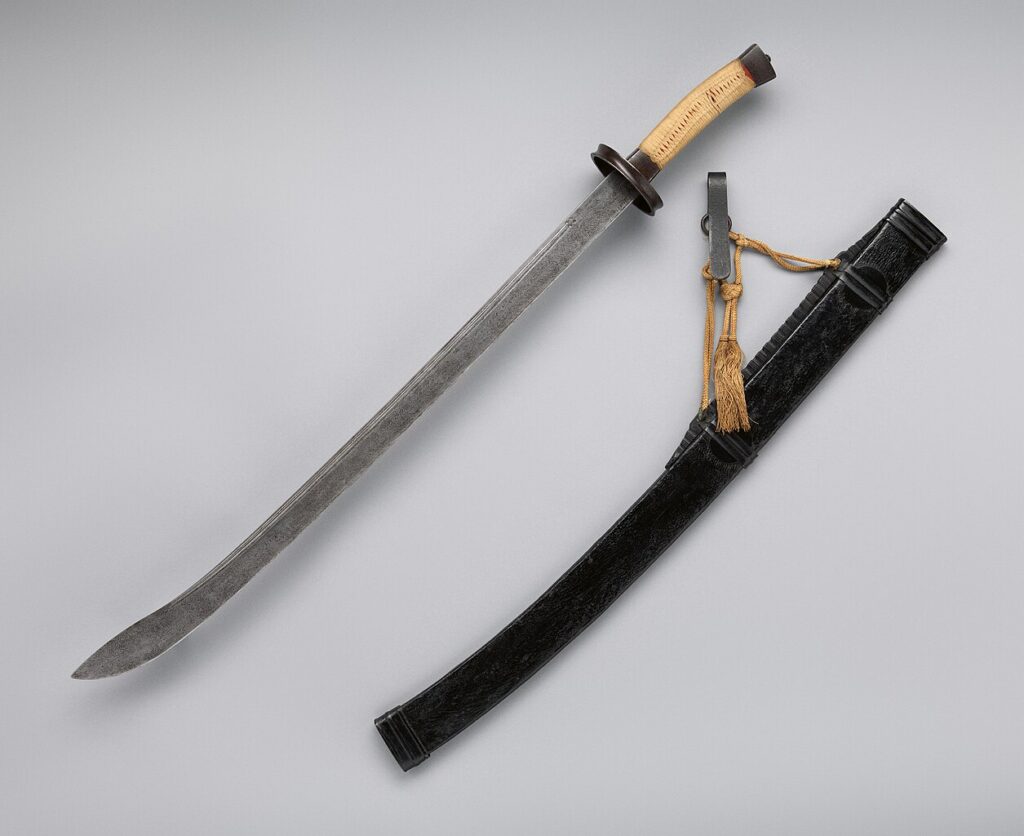
The Chinese dao sword, dating back to the Tang Dynasty (618–907 AD), is a single-edged blade used in both combat and ceremonial contexts. Known for its wide blade and curved design, the dao is often associated with military strategy and Chinese martial arts. It is typically made from high-quality steel and features a wooden or metal handle. The dao sword’s market value can range from $500 to $1,500, depending on its age and craftsmanship.
The dao was historically used by soldiers and warriors in China, offering powerful slashing abilities in battle. Over time, it evolved into a symbol of honor and martial skill. The dao has influenced various forms of Chinese martial arts, particularly swordsmanship. Today, it is considered an important historical weapon, and many dao swords are now valued by collectors and enthusiasts. Its design and cultural significance make it a revered piece of Chinese history.
African Swords (Naga Sword)
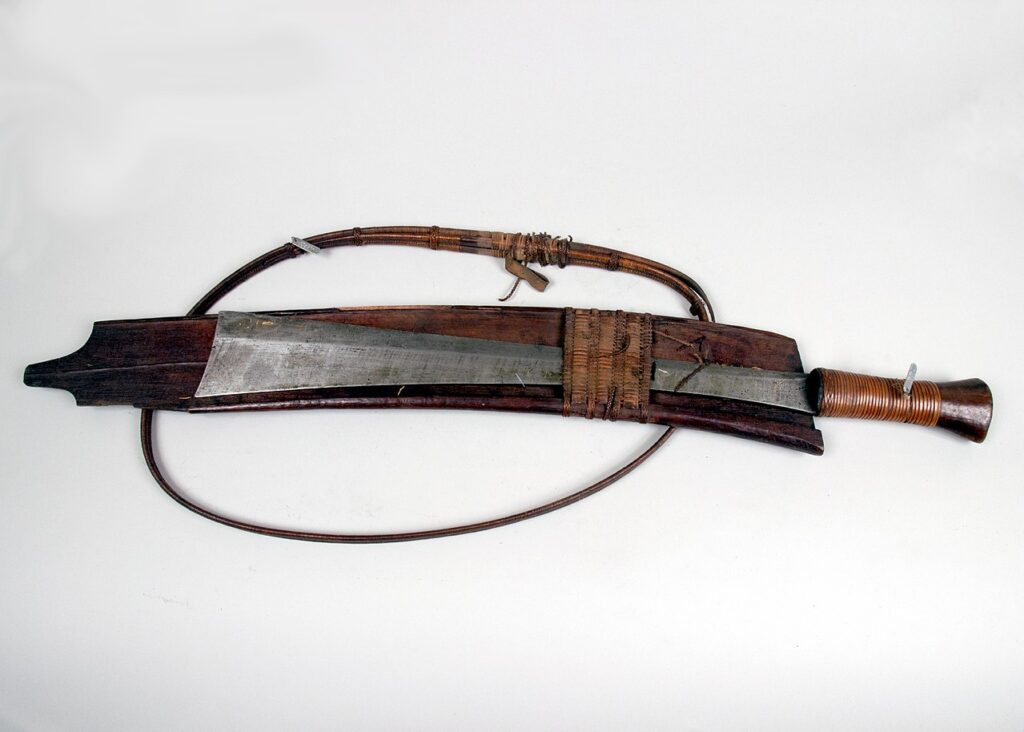
The Naga sword is an African weapon with a unique curved blade and distinctive handle. Originating from the Naga tribes in India and Myanmar, it is used both as a weapon and a ceremonial item. The Naga sword features a short, thick blade, often made of iron or steel, and is known for its ability to strike hard blows. The market value of the Naga sword typically ranges from $300 to $800, depending on its condition and craftsmanship.
The Naga sword has deep cultural and spiritual significance, often passed down through generations. It was used in battle and as a symbol of prestige among the Naga people. Over the years, the design of the Naga sword has remained largely unchanged, preserving its historical importance. The sword’s unique features and cultural significance make it a sought-after item by collectors. Today, the Naga sword is considered a symbol of strength and heritage.
Indian Kukri
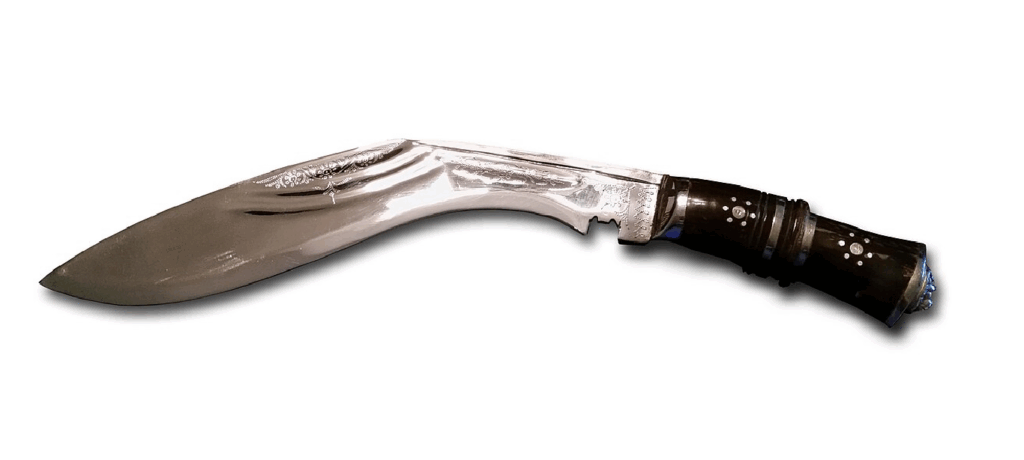
The kukri is a traditional Nepalese blade with a curved shape, originating from India and widely used by the Gurkhas. The blade’s design makes it effective for both chopping and slashing. Typically made from steel, the kukri has a heavy, solid feel and is built to last. The market value for an authentic kukri ranges from $100 to $400, depending on craftsmanship and age.
The kukri has a deep cultural significance in Nepalese and Indian history, where it was used by soldiers and warriors. Its unique shape allows for efficient use in combat and cutting tasks. The kukri is also used in ceremonial contexts, often presented as a symbol of bravery. Today, the kukri is sought after by collectors for its historical value and craftsmanship. It remains a vital part of Nepalese heritage and is used by the Gurkhas in the military.
These knives serve as a reminder of the skill and artistry involved in their making. As time goes on, these blades continue to be passed down, maintaining their significance and value. From their use in daily life to their place in collections, these traditional knives remain timeless treasures.
This article originally appeared on Avocadu.
